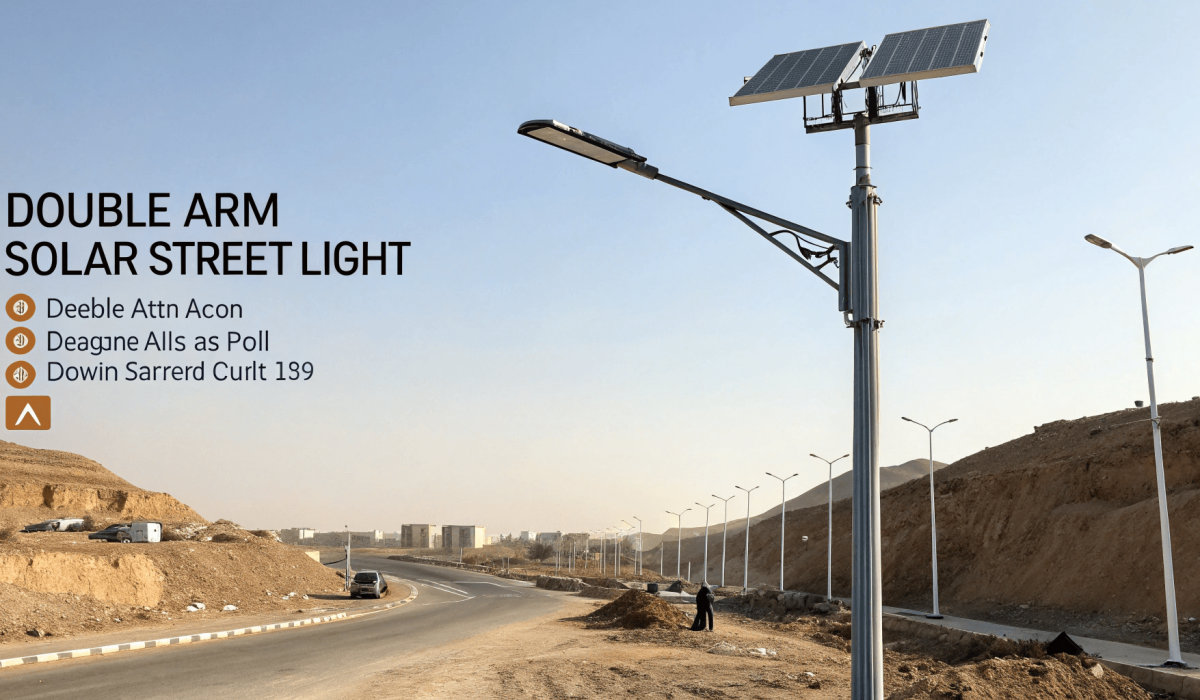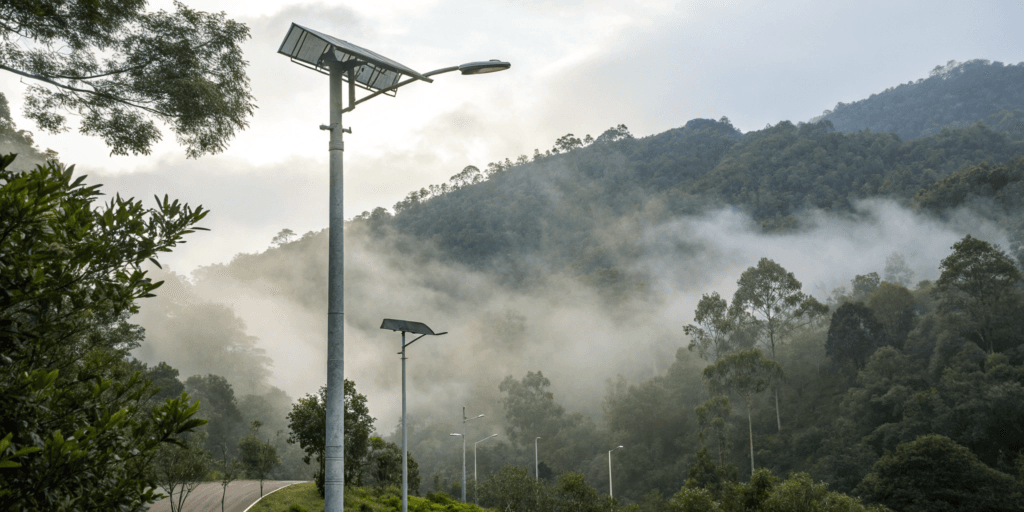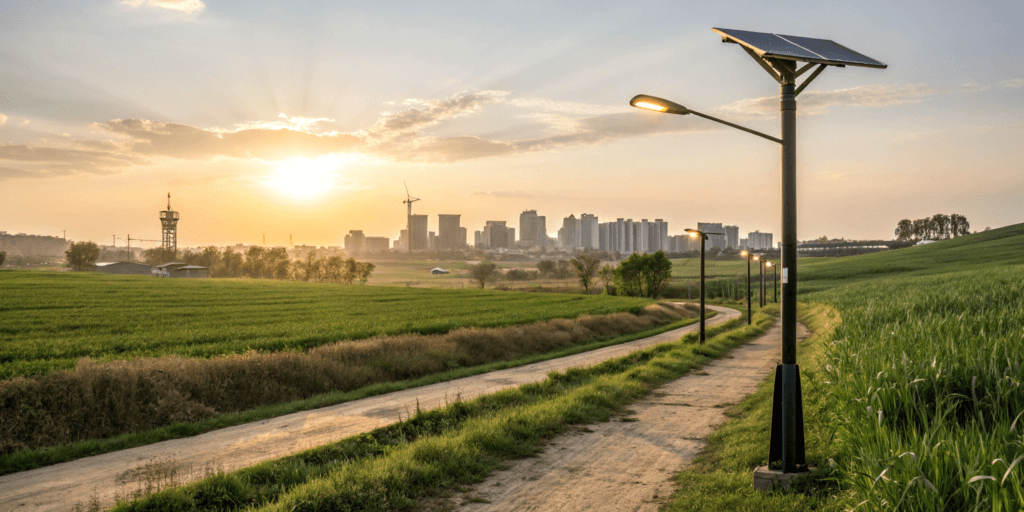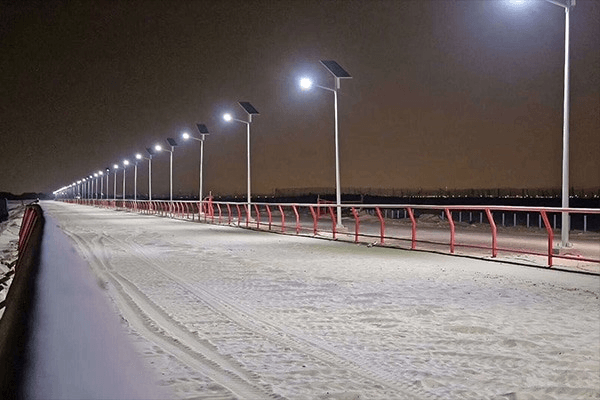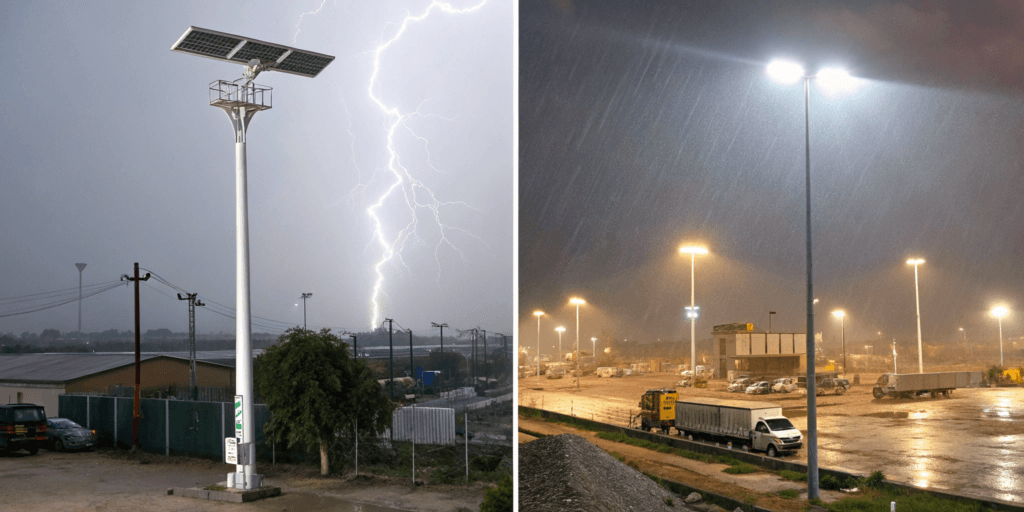When it comes to selecting durable and reliable solar street light poles, understanding IP ratings is essential. IP (Ingress Protection) ratings ensure that outdoor lighting systems can withstand various environmental factors. In this article, we’ll dive into what IP ratings are, how they impact double arm solar street light poles, and why making an informed decision is crucial for long-term performance.
IP ratings are vital for choosing the right solar street light poles, ensuring protection from dust, dirt, and moisture. This leads to better durability, lower maintenance, and higher performance over time.
Outdoor lighting systems, especially those installed in harsh environments, need to be protected from the elements. In this article, we'll explore how IP ratings help achieve that and how they contribute to the longevity of solar street light poles.
What is an IP Rating?
Definition and Structure of IP Ratings
An IP rating (Ingress Protection rating) is a standardized measure used to define the level of protection provided by electrical enclosures against solids (like dust) and liquids (like water). It consists of two digits:
- The first digit refers to protection against solids (dust, dirt, etc.).
- The second digit refers to protection against liquids (water, moisture, etc.).
Each digit has a scale that ranges from 0 (no protection) to 6 or 9 (highest protection), depending on the type of threat.
Common IP Ratings in Street Lighting
In the world of solar street lights, you may encounter the following IP ratings:
- IP65: Protection against dust and water jets from any direction.
- IP66: Protection against powerful water jets from any direction.
- IP67: Dust-tight, and protection against immersion in water up to 1 meter for 30 minutes.
- IP68: Dust-tight and protection against prolonged immersion beyond 1 meter.
How IP Ratings are Determined
The testing methods for IP ratings are set by international standards, such as the International Electrotechnical Commission (IEC). Testing is done in controlled environments where the equipment is subjected to various levels of dust and water exposure. Afterward, the rating is determined based on its performance in these tests.
Why IP Ratings Matter for Double Arm Solar Street Light Poles
Protection from Dust and Dirt
When you install solar street lights in areas exposed to heavy dust or dirt, the IP rating becomes a critical factor. Dust accumulation can impair the functionality of your light pole, causing maintenance issues. A high IP rating ensures that your solar lights remain operational in high-traffic or industrial zones, where dust exposure is inevitable.
Protection from Water and Weather Conditions
Waterproofing is another vital factor, especially in areas with frequent rainfall, snow, or high humidity. Water ingress can cause damage to the internal components of the light pole, leading to costly repairs and replacements. A high IP rating ensures that the poles are protected from such conditions, prolonging their lifespan and minimizing maintenance.
Safety and Longevity
A higher IP rating contributes to safer and more durable products. Solar street lights with better protection can withstand environmental challenges, reducing the risk of malfunction or failure. Over time, this leads to significant cost savings as there will be fewer repairs and replacements needed.
Ideal IP Ratings for Double Arm Solar Street Light Poles
Recommended IP Ratings for Various Environmental Conditions
The ideal IP rating depends on the environment where the solar street light poles will be installed. Here’s a breakdown of suitable ratings for various locations:
- Urban Areas: IP65 and IP66 offer protection from dust and water jets, making them suitable for typical urban environments.
- Coastal Areas: IP67 or IP68 provides complete waterproofing and protection against harsh coastal conditions, where saltwater and extreme weather conditions are common.
- Extreme Conditions: IP69K is the highest protection level and is used in extreme outdoor applications, such as in industries requiring intense cleaning or high-pressure water exposure.
Choosing the Right IP Rating Based on Location
When selecting the IP rating for your solar street light pole, consider the following:
- Climate: Is the area prone to heavy rainfall, snow, or humidity?
- Exposure to elements: Will the pole be exposed to dust, dirt, or saltwater (e.g., near oceans)?
- Installation site specifics: For instance, industrial zones may need higher protection due to pollutants and chemicals in the air.
IP Rating and Solar Panel Performance
Importance of IP Ratings for Solar Panels
The IP rating of the light pole directly influences the solar panel’s performance. If the pole is not adequately protected, dust accumulation, moisture ingress, or dirt can affect the solar panels’ ability to function efficiently. Solar panels need to be shielded from these elements to ensure they collect enough sunlight and generate optimal energy.
Durability of Solar Components
Just like the pole itself, solar components such as panels and electrical wiring also require protection from environmental elements. Low-rated IP poles can expose these components to damage, reducing their lifespan and efficiency. A high IP-rated pole ensures that all components stay safe and continue to operate effectively for years.
Case Studies and Real-World Applications
Examples of Successful Installations
In various industries, double arm solar street lights with high IP ratings have been deployed successfully. For example:
- Commercial properties have used IP66-rated poles to ensure their lighting systems can handle moderate weather exposure.
- Parks and roads in coastal areas often opt for IP68-rated poles to withstand saltwater exposure and provide uninterrupted lighting.
Impact on Performance and Customer Satisfaction
Customers who have chosen high IP-rated poles report fewer maintenance issues and longer-lasting performance. As a result, they experience a reduction in operational costs and fewer replacements, which leads to higher overall satisfaction.
How to Select the Right IP Rating for Your Solar Street Light Pole
Step-by-Step Guide to Choosing the Best IP Rating
Follow these steps to choose the best IP rating for your solar street light pole:
- Determine your location and environment: Identify if it is urban, coastal, or industrial.
- Match the IP rating with your local weather conditions and exposure to dust, moisture, or other environmental factors.
- Consider the specific needs of your solar system: Solar panels and electrical components need adequate protection to function at full capacity.
Common Mistakes to Avoid When Choosing IP Ratings
- Not considering environmental factors: It’s crucial to factor in local climate and exposure conditions when selecting an IP rating.
- Overlooking long-term durability: Choosing lower-rated poles might save costs upfront but result in more maintenance and replacements over time.
Additional Features to Consider When Selecting Solar Street Light Poles
Energy Efficiency
Solar street light poles with higher IP ratings should also feature energy-saving technologies. Combining a high IP rating with efficient LEDs and smart controllers will maximize performance while minimizing energy consumption.
Maintenance and Warranty
Ensure that your solar street light poles come with a robust warranty and have low maintenance requirements. A high IP rating typically goes hand-in-hand with better product longevity and fewer repairs.
Technological Integration
Incorporating smart technologies, such as remote monitoring and IoT capabilities, can further enhance the performance of your solar street lights. These technologies work best when paired with poles that have high IP ratings, ensuring that the electronics stay protected in challenging environments.
Conclusion
In conclusion, selecting the right IP rating for your double arm solar street light poles is essential to ensure their protection and long-term performance. With proper understanding, you can make an informed decision that will save on maintenance costs and improve the overall reliability of your lighting systems.
Call to Action
Consult with experts, like Hi-Tech China, to select the best solar street light poles tailored to your environmental needs and ensure the longevity of your lighting infrastructure.
FAQs (Frequently Asked Questions)
What is the highest IP rating available for solar street lights?
The highest IP rating commonly available is IP69K, providing the best protection against dust, moisture, and high-pressure water.
Can I install solar street lights with lower IP ratings in areas with frequent rainfall?
It’s not recommended. For areas with frequent rainfall, a minimum rating of IP65 is suggested to protect the system from water ingress.
How do IP ratings affect the warranty of solar street lights?
Higher IP ratings often indicate higher product quality, which can positively affect the warranty and reduce the frequency of repairs.

